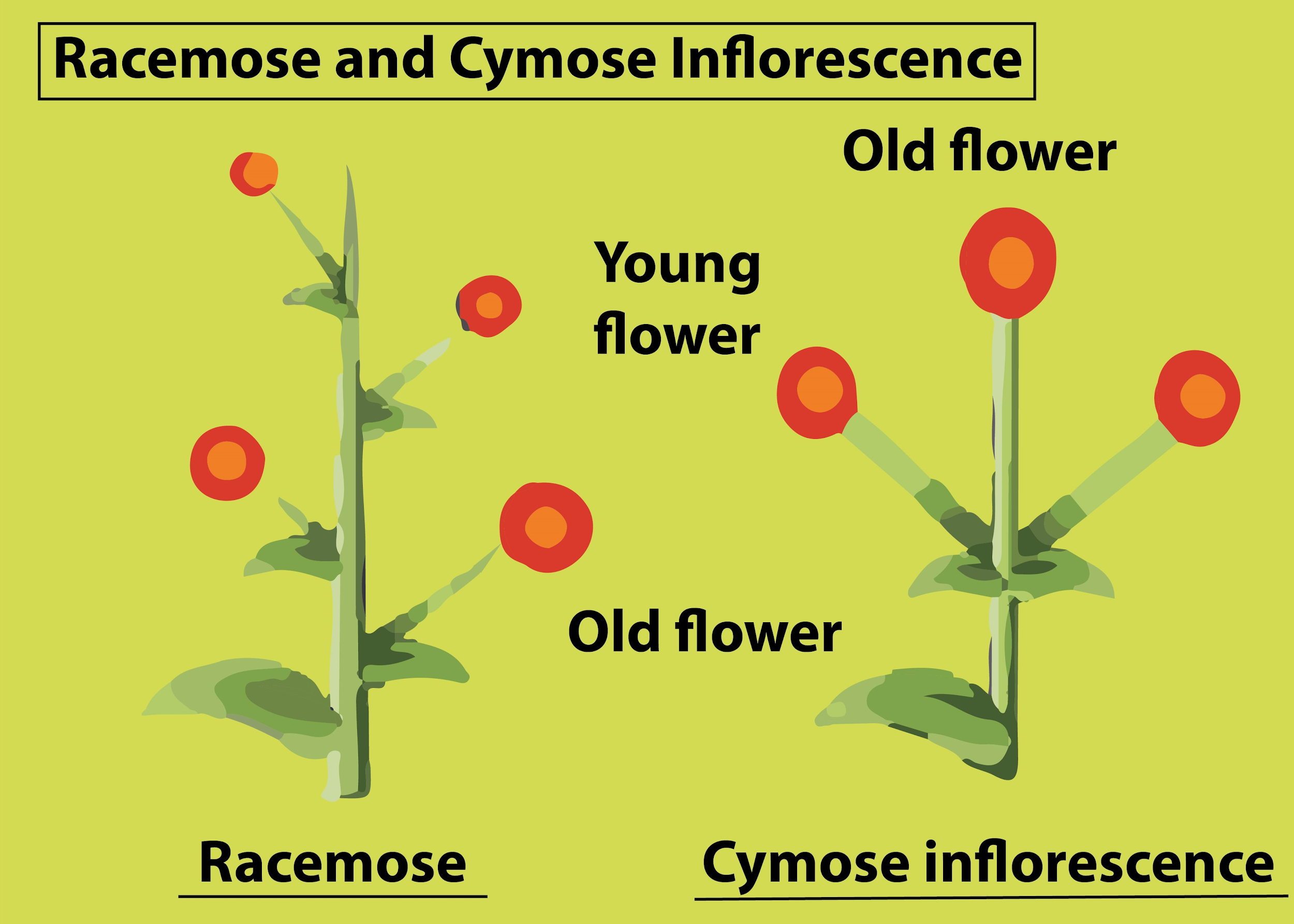
Cymose inflorescence is found in?
(a) Solanum
(b) Sesbania
(c) Trifolium
(d) Brassica
Answer
572.1k+ views
Hint: The pattern of flower arrangement on the floral axis is known as inflorescence. In cymose inflorescence, the peduncle terminates into a flower. This inflorescence is found in crops like potatoes, tomatoes, bell plants, egg plants, etc. These all come under family Nightshades.
Complete answer:
The shoot is modified to form the flower. Hence, flowers are considered as modified shoots. When the apical shoot meristem changes to the floral meristem then the shoot bears flowers. During the formation of the floral meristem, the axis condenses and internodes do not elongate. The axis bears flowers at the successive nodes instead of leaves.
The flowers are borne either singly or in clusters on the shoot. At the point when the shoot tip changes into a flower, it is consistently solitary. The arrangement of flowers on the floral axis of the plant is known as inflorescence.
The cymose inflorescence is portrayed by the presence of a flower at the peak of the flower axis. The growth of the main axis is limited and the lateral axis also terminates into flower and that limits the growth of the axis.
Solanaceae have cymose inflorescence as it has a determinate growth in which the inflorescence meristem terminates into a floral bud followed by the next floral meristem. Hence, Solanum shows cymose inflorescence.
Additional Information:
In a cymose inflorescence, flowers are present in the basipetal succession, i.e. older flowers are present terminally and the younger ones at the base. This type of arrangement is known as centrifugal with the older flowers present in the middle and the younger ones at the periphery.
There are four main types of cymose inflorescence:
-Monochasial cyme
-Dichasial cyme
-Polychasial cyme
-Cymose capitulum
Racemose: In racemose types of inflorescence the main axis grows continuously and flowers are present laterally on the floral axis. Flowers are present in an acropetal manner.
Other than these two, there are three special types of inflorescence present. These are:
-Hypanthodium
-Cyathium
-Verticillaster
So, the answer is, “Solanum”
Note:
- In the cymose type of inflorescence, the main axis does not grow continuously. A flower is present terminally on the main axis. The flowers are borne in a basipetal order. The main axis has limited growth.
- Trifolium, Sesbania, and Brassica show Racemose inflorescence and have acropetal succession.

Complete answer:
The shoot is modified to form the flower. Hence, flowers are considered as modified shoots. When the apical shoot meristem changes to the floral meristem then the shoot bears flowers. During the formation of the floral meristem, the axis condenses and internodes do not elongate. The axis bears flowers at the successive nodes instead of leaves.
The flowers are borne either singly or in clusters on the shoot. At the point when the shoot tip changes into a flower, it is consistently solitary. The arrangement of flowers on the floral axis of the plant is known as inflorescence.
The cymose inflorescence is portrayed by the presence of a flower at the peak of the flower axis. The growth of the main axis is limited and the lateral axis also terminates into flower and that limits the growth of the axis.
Solanaceae have cymose inflorescence as it has a determinate growth in which the inflorescence meristem terminates into a floral bud followed by the next floral meristem. Hence, Solanum shows cymose inflorescence.
Additional Information:
In a cymose inflorescence, flowers are present in the basipetal succession, i.e. older flowers are present terminally and the younger ones at the base. This type of arrangement is known as centrifugal with the older flowers present in the middle and the younger ones at the periphery.
There are four main types of cymose inflorescence:
-Monochasial cyme
-Dichasial cyme
-Polychasial cyme
-Cymose capitulum
Racemose: In racemose types of inflorescence the main axis grows continuously and flowers are present laterally on the floral axis. Flowers are present in an acropetal manner.
Other than these two, there are three special types of inflorescence present. These are:
-Hypanthodium
-Cyathium
-Verticillaster
So, the answer is, “Solanum”
Note:
- In the cymose type of inflorescence, the main axis does not grow continuously. A flower is present terminally on the main axis. The flowers are borne in a basipetal order. The main axis has limited growth.
- Trifolium, Sesbania, and Brassica show Racemose inflorescence and have acropetal succession.

Recently Updated Pages
Master Class 12 Business Studies: Engaging Questions & Answers for Success

Master Class 12 Economics: Engaging Questions & Answers for Success

Master Class 12 English: Engaging Questions & Answers for Success

Master Class 12 Maths: Engaging Questions & Answers for Success

Master Class 12 Social Science: Engaging Questions & Answers for Success

Master Class 12 Chemistry: Engaging Questions & Answers for Success

Trending doubts
What is meant by exothermic and endothermic reactions class 11 chemistry CBSE

Which animal has three hearts class 11 biology CBSE

10 examples of friction in our daily life

One Metric ton is equal to kg A 10000 B 1000 C 100 class 11 physics CBSE

1 Quintal is equal to a 110 kg b 10 kg c 100kg d 1000 class 11 physics CBSE

Difference Between Prokaryotic Cells and Eukaryotic Cells




